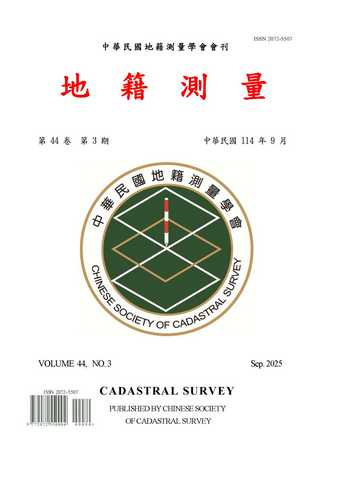 |
 本站僅提供期刊文獻檢索。 本站僅提供期刊文獻檢索。
【月旦知識庫】是否收錄該篇全文,敬請【登入】查詢為準。
 最新【購點活動】 最新【購點活動】
|
| 篇名 |
GNSS於台灣地區效能分析
|
| 並列篇名 |
The Performance Analysis of Future GNSS in Taiwan Region |
| 作者 |
蔡孟倫、江凱偉、楊名 |
| 中文摘要 |
全球導航衛星系統(Global Navigation Satellite System, GNSS)性能指標可區分為可得度(availability)、精度(accuracy)、完好度(integrity)及可靠度(reliability)。未來現代化GPS、Galileo之單一衛星導航系統或整合GPS與Galileo的雙系統多頻衛星導航系統,將會提供較現有GPS系統加倍的衛星、更多的測量頻率、以及更好的訊號品質,從而進一步提昇現有GPS衛星定位的精度、可靠度、以及效率。這點對測量界的使用者是相當重要的。由於GPS與Galileo具備較高之相容性且未來GPS之L1/L5會與Galileo之E1/E5b具備相同之頻率。故預期未來基於成本之考量,雙系統雙頻的GNSS會成為測量等級GNSS接收機設計之主流。故本研究擬利用自行研發的GNSS模擬器針對未來GPS/Galileo整合式定位系統在台灣地區的三維定位精度分佈、內可靠度(minimal detectable bias, MDB)及外可靠度(minimal detectable effect, MDE)進行評估與分析。
The indices to evaluate the performance of Global Navigation Satellite System (GNSS) are composed of satellite availability, positioning accuracy, integrity and reliability. The future GNSS including stand alone modernized GPS, Galileo or GPS/Galileo integrated system will support more satellites, more observable frequencies and better signal quality comparing to current GPS. Therefore, the positioning accuracy, reliability and efficiency can further be enhanced. For surveying communities, those improvements are very critical. Since the compatibility between modernized GPS and Galileo is enhanced in the design phase and both of them will share two frequencies (L1/E1, L5/E5a), therefore, the receiver supporting dual-systems and dual-frequencies will dominate the geodetic grade GNSS receiver market in the future based on the accuracy enhancement and cost anticipated. This study aims at using the GNSS software simulator developed in the department of Geomatics, NCKU to analyze the three dimensional positioning accuracy, internal reliability (minimal detectable bias, MDB) and external reliability (minimal detectable effect, MDE) in Taiwan region based on three different scenarios including stand along modernized GPS, Galileo and GPS/Galileo integrated system. |
| 英文摘要 |
The indices to evaluate the performance of Global Navigation Satellite System (GNSS) are composed of satellite availability, positioning accuracy, integrity and reliability. The future GNSS including stand alone modernized GPS, Galileo or GPS/Galileo integrated system will support more satellites, more observable frequencies and better signal quality comparing to current GPS. Therefore, the positioning accuracy, reliability and efficiency can further be enhanced. For surveying communities, those improvements are very critical. Since the compatibility between modernized GPS and Galileo is enhanced in the design phase and both of them will share two frequencies (L1/E1, L5/E5a), therefore, the receiver supporting dual-systems and dual-frequencies will dominate the geodetic grade GNSS receiver market in the future based on the accuracy enhancement and cost anticipated. This study aims at using the GNSS software simulator developed in the department of Geomatics, NCKU to analyze the three dimensional positioning accuracy, internal reliability (minimal detectable bias, MDB) and external reliability (minimal detectable effect, MDE) in Taiwan region based on three different scenarios including stand along modernized GPS, Galileo and GPS/Galileo integrated system. |
| 起訖頁 |
14-29 |
| 刊名 |
地籍測量 |
| 期數 |
200709 (26:3期) |
| 出版單位 |
中華民國地籍測量學會
|
| 該期刊-上一篇 |
全球定位系統浮標運用於衛星測高儀絕對率定 |
| 該期刊-下一篇 |
TWD67與TWD97及其轉換 |
| |
|
新書閱讀
最新影音
優惠活動
|